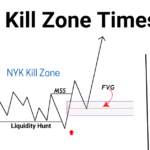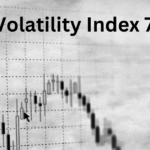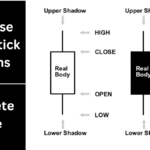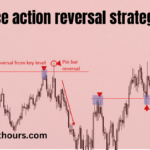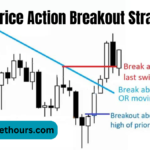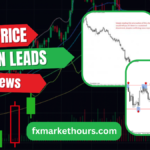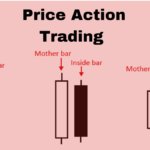What Is Price Action? – Price Action Trading Explained
Price Action trading is a popular method used by traders to predict how prices in financial markets will move in the future. It’s a straightforward approach that focuses on the actual movement of prices over time, rather than relying on complex indicators or external factors like news events. Traders often prefer this method because it’s simple, clear, and based on direct market data.

In essence, price action refers to the way prices change or the “action” of prices. This movement is most noticeable in markets that are highly liquid and volatile, but it can be seen in any market where buying and selling take place. For traders, understanding price action is essential because it reflects all the decisions and actions of market participants.
How Price Action Trading Works
Price action trading is a type of technical analysis that looks solely at price history to make trading decisions. Unlike other forms of technical analysis, which might use indicators derived from price movements, price action trading is considered “pure.” Traders using this strategy focus only on how the current price relates to previous prices, especially in recent months.
Most price action traders examine the past three to six months of price data, with an emphasis on recent highs, lows, and important levels of support and resistance. By analyzing this data, traders can gain insights into market sentiment and predict where prices might go next.
The Simplicity of Price Action Trading
A key principle of price action trading is to “Keep It Simple.” Many traders believe that overcomplicating charts with multiple indicators and analysis tools can lead to confusion and poor decisions. Instead, price action traders use clean, uncluttered charts that focus only on the movement of prices.
This minimalist approach is sometimes called “naked trading” or “clean chart trading.” The idea is that the price action itself contains all the information needed to make trading decisions. Since the market’s price reflects all factors that could influence it—such as economic data and news events—traders using this strategy focus only on the price.
Common Price Action Patterns
One of the most important aspects of price action trading is recognizing and understanding price action patterns. These patterns, also known as triggers, setups, or signals, provide clues about what the price might do next. Below are some of the most common price action patterns used in trading:
- Inside Bar Pattern: This is a two-bar pattern where the second bar (the inside bar) is completely contained within the range of the first bar (the mother bar). Traders often use this pattern as a breakout signal in trending markets, but it can also indicate a reversal if it occurs at a key level on the chart.
- Pin Bar Pattern: The pin bar is a single candlestick pattern that shows price rejection and a potential reversal. The pattern is effective in both trending and range-bound markets. The pin bar’s long tail indicates a reversal of the price direction, suggesting that the price might move in the opposite direction.
- Fakey Pattern: The fakey pattern occurs when there is a false breakout of an inside bar pattern. Initially, it looks like the price is breaking out in one direction, but then it quickly reverses and moves in the opposite direction. This pattern is useful in trending markets and at key levels, as it can signal a significant price movement.
Trading with Price Action Patterns
When trading with price action patterns, context is crucial. For example, a bearish fakey pattern in a downtrend is more likely to succeed because it aligns with the overall market trend. Similarly, a bullish fakey pin bar setup in an uptrend can be a strong signal, especially if the market has been moving aggressively in one direction.
Understanding the context of price action patterns can help traders make better decisions. Patterns that align with the overall market trend or form significant support or resistance levels are often the most reliable.
The Importance of Confluence in Price Action Trading
Confluence is a key concept in price action trading. It refers to the idea that the best trading signals occur when multiple factors support the trade. For instance, if a pin bar forms in an uptrend and at a support level, this is a strong signal because it combines the power of the trend with the significance of the support level.
Traders look for areas on the chart where these factors “come together” to create high-probability trading opportunities. The more factors that align with a price action signal, the stronger that signal is considered to be.
Benefits of Price Action Trading
One of the main benefits of price action trading is its simplicity. Because it relies only on price data, there’s no need to spend time analyzing complex indicators or tracking news events. This makes it easier for traders to focus on the most important information—the price itself.
Another benefit is that price action trading works well in various market conditions. Whether the market is trending, ranging, or experiencing high volatility, price action patterns can provide useful signals. This versatility is one reason why many traders prefer this approach.
Conclusion
Price action trading is a powerful and straightforward method for analyzing financial markets. By focusing on the movement of prices over time, traders can gain valuable insights into market behavior and make informed trading decisions.
For those interested in learning more, many resources are available, including price action trading books and PDFs that offer detailed explanations and strategies. These resources can help traders deepen their understanding of price action and improve their trading skills. As you continue to explore this trading strategy, remember that practice and experience are key to mastering price action trading.

